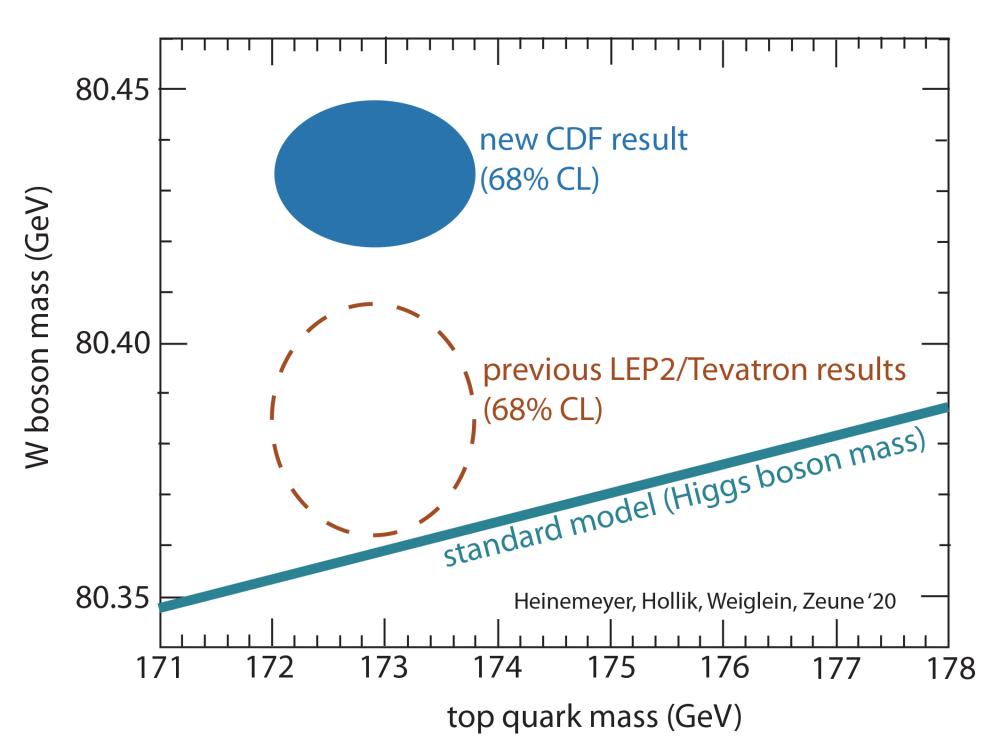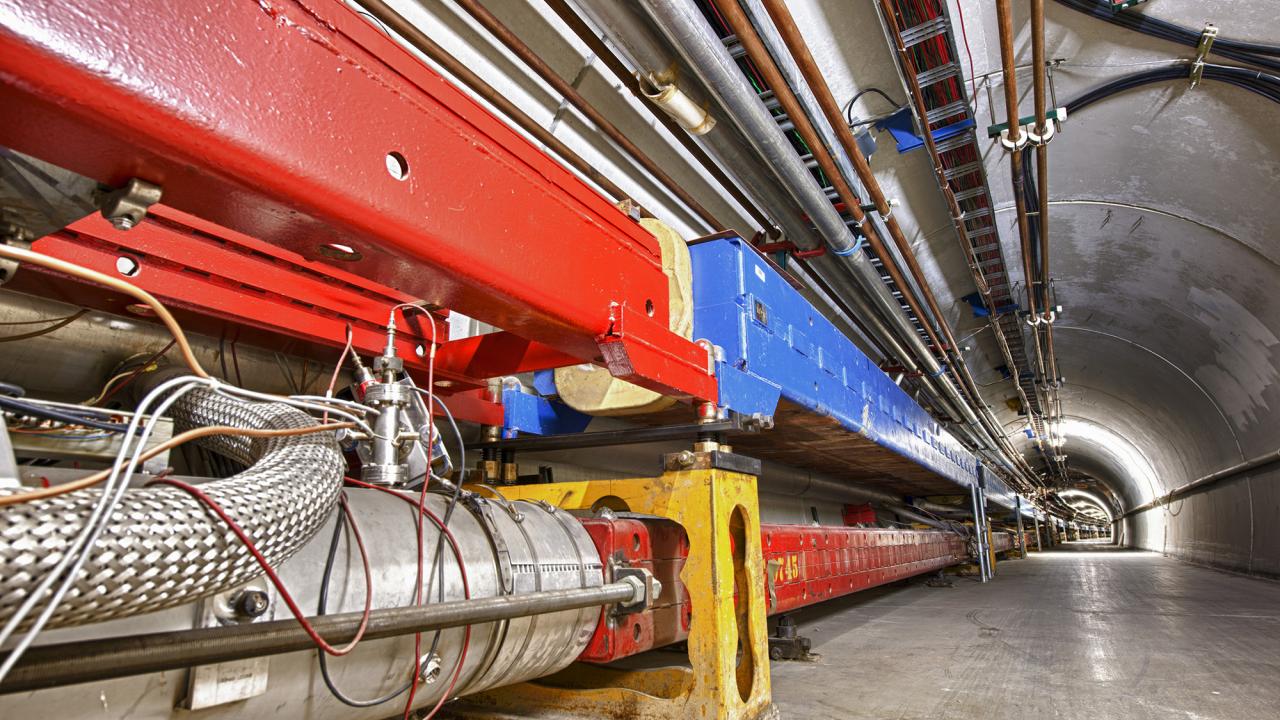An international team of physicists, including several from the high energy experiment group at the UC Davis Department of Physics and Astronomy, has come up with the best measure yet of the mass of the W-boson – putting it in conflict with existing elements of the Standard Model of particle physics.
“It’s an amazing result,” said Maxwell Chertok, professor of physics at UC Davis and a member of the team.
The work was published April 7 in Science. UC Davis coauthors on the team include physics professors Robin Erbacher, Chertok and John Conway; students and researchers, Charles Cox, David Cox, Robert Forrest, Andrew Ivanov, Justin Pilot, Shalhout Shalhout, Scott Wilbur and senior researcher John Smith.
The team came up with the result by analyzing the final decade of data from the Tevatron at Fermilab, the U.S. Department of Energy laboratory in Illinois. The Tevatron was the world’s most powerful particle accelerator before the Large Hadron Collider at CERN, Switzerland came online in 2010. The Tevatron shut down in 2011, but physicists have continued to analyze data from the experiments.
The W-boson carries the weak force, one of the fundamental forces in the Standard Model. The particle was discovered at CERN in 1983 and physicists have been making increasingly accurate measurements of its mass – which is tied to its energy, through E=mc² – since then.

The mass of the W-boson is related to that of the Higgs boson (discovered with the LHC at CERN in 2012) and another particle, the top quark, which was discovered using the Tevatron in 1995, through the Standard Model, Conway said.
The new measurement, with an accuracy better than 0.01% or better than 1 in 10,000, puts the mass of the W-boson at about 70 mega electron-volts (MeV) higher than previous, less precise measurements. That is significantly higher than predicted by the Standard Model, based on the mass of the top quark and Higgs boson.
The new measurement is based on more than 4 million candidate particles observed at the Tevatron over ten years. Challenges involved simulating and allowing for tiny effects from equipment and processes. The entire analysis was conducted blind, without seeing the final result until the end, to avoid unconscious bias in the results.
The mass of the W-boson is one of a growing list of anomalies in the Standard Model that point to the existence of ‘new physics,’ Chertok said.
The Standard Model does not, for example, include a particle for dark matter, which makes up about a quarter of the universe. We know that dark matter exists because we can see how its gravity bends light from distant galaxies. If dark matter is a stable particle, it might account for the anomalous mass of the W-boson through a theory called supersymmetry, Conway said. But there are other possible explanations as well.
“It doesn’t tell us what new physics is, but it does motivate us to keep looking,” he said.
Physicists are continuing to work on even more refined estimates of the w-boson mass with the ATLAS and CMS experiments at the Large Hadron Collider.
"This is an exciting, tour-de-force measurement, which clearly puts pressure on the LHC, and the CMS experiment in particular, to move quickly to release a measurement. It will be interesting to watch how the W mass story evolves," Erbacher said.
